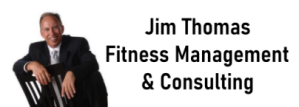In the world of gym businesses, growth is often the ultimate goal. Every gym owner, boutique studio operator, and personal trainer dreams of rapid expansion—more members, larger revenue, and an expanded facility. The allure of overnight success is tempting. Who wouldn’t want to see their gym business grow exponentially and quickly?
However, there’s a hidden cost to chasing rapid growth, and it can have significant consequences on the long-term health of your gym. While the idea of explosive expansion may seem attractive, slow and steady growth is often the key to sustainable, successful business operations.
In this article, we’ll break down the hidden costs of overnight gym business growth and why taking a more measured, deliberate approach leads to greater success in the long run.
1. The Myth of Overnight Success: Instant Growth vs. Sustainable Growth
It’s easy to be enamored with stories of gym businesses that seem to explode onto the scene overnight. These success stories are often shared on social media and in industry reports, creating the illusion that such rapid growth is not only achievable but desirable. However, what most gym owners and entrepreneurs don’t see are the behind-the-scenes struggles that come with scaling too quickly.
When a gym grows too fast, it risks being unable to manage the expansion effectively. It may be overwhelmed by a surge in new members, staff shortages, or poorly defined systems. Without a solid foundation, the pressure of growth can cause cracks to appear in every corner of the operation.
The reality? Rapid growth without strategic planning can lead to mismanagement, poor customer service, and even a loss of brand identity.
2. Hidden Costs of Rapid Expansion
The hidden costs of overnight growth aren’t always obvious at first. However, as you begin to scale your business rapidly, several critical areas may suffer.
a) Quality of Service and Member Retention
As your gym’s membership base grows exponentially, it becomes more challenging to maintain the same level of personalized service that helped you initially attract members. When quality begins to slip, members can become dissatisfied, and retention rates plummet.
Many gyms focus so much on attracting new members that they forget to nurture their existing ones. Slow, steady growth allows gym owners to maintain strong relationships with current members while onboarding new ones in a sustainable way.
b) Operational Strain
Scaling too quickly puts significant strain on your operations. From managing an influx of members to keeping up with an increased demand for staff and resources, rapid growth requires swift decision-making and adaptability. Without the proper infrastructure in place, this strain can lead to operational inefficiencies, such as:
-
Long wait times for equipment
-
Overcrowded classes
-
Unhappy members due to poor customer service
-
Inefficient financial tracking and reporting
It’s important to have solid systems and processes that can accommodate growth incrementally rather than all at once. Slow growth allows for the gradual implementation of systems that can scale with your business and keep operations running smoothly.
c) Cash Flow Problems
When you’re growing fast, the cash demands on your business can increase unexpectedly. New equipment, marketing costs, and expanded staff all require substantial investments. Without careful financial management, gym owners may find themselves running into cash flow problems, even if their business is “doing well” on the surface.
Additionally, rapid growth can often lead to taking on too much debt, stretching your finances thin. A slow and steady approach to growth ensures that you can maintain a balanced financial outlook, avoid overextending yourself, and stay on top of cash flow management.
d) Staffing Challenges
Expanding too quickly may require hiring a large number of staff in a short period. Rushing through the hiring process can lead to bringing on unqualified or mismatched employees, which may negatively affect your gym’s culture and quality of service.
When growth is slower, you have the luxury of hiring carefully and ensuring that each team member fits your gym’s values and operational needs. It’s better to take the time to find the right people than to hire quickly and risk high turnover and poor employee morale.
3. The Benefits of Slow and Steady Growth
So, why does slow and steady growth win the race in the gym business?
a) Stronger Foundation for Long-Term Success
By allowing your gym to grow gradually, you give yourself the time and space needed to solidify your business foundation. This foundation encompasses everything from your brand identity and customer service philosophy to your operational systems and staff culture. A gym that grows slowly can adjust and refine these aspects, which are crucial for longevity.
b) More Control and Better Decision-Making
Slow growth gives gym owners more control over their business decisions. Whether it’s selecting new equipment, training staff, or experimenting with marketing campaigns, gradual expansion gives you the ability to make thoughtful, informed choices without rushing into decisions that could backfire.
When you scale too quickly, decisions are often made under pressure, which can lead to poor choices and missed opportunities. With steady growth, you have the time to assess the impact of each decision and adjust accordingly.
c) Maintaining a High Standard of Customer Experience
One of the biggest advantages of slow growth is the ability to maintain a high level of customer service and member experience. By scaling at a manageable pace, you ensure that each new member gets the attention and support they need, and you can continue to build strong relationships with your existing members. This focus on customer satisfaction can lead to greater member loyalty and higher retention rates.
d) Financial Stability
Steady growth allows for better financial planning and cash flow management. When you expand at a sustainable rate, you are less likely to encounter sudden financial pitfalls. This approach ensures that you are able to reinvest profits into the business, pay off any debts, and secure the future of your gym.
e) Building a Reputation for Reliability and Quality
Gyms that grow too quickly often face reputation challenges. They may appear to be offering something for everyone, but fail to deliver the quality and consistency they promised. On the other hand, gyms that focus on slow, steady growth build their reputation on reliability, quality, and strong community ties. They become known for their consistent service and the long-term value they provide to their members.
4. How to Implement Slow and Steady Growth
Here are a few practical strategies to ensure your gym grows at a pace that supports long-term success:
- Focus on Member Retention: Prioritize member satisfaction and retention. Happy, loyal members are more likely to recommend your gym to others and stick around for the long haul.
- Invest in Systems: Ensure your operational systems (CRM, financial tracking, scheduling) are scalable and efficient. This will prevent future headaches as your membership base grows.
- Monitor Cash Flow: Keep a close eye on your finances, ensuring you have enough capital to support your growth. Plan your investments wisely and avoid taking on too much debt too quickly.
- Hire Smart, Not Fast: Invest in your team by hiring the right people who are aligned with your gym’s mission and culture. Avoid the temptation to rush the hiring process.
- Adjust Marketing Strategies Gradually: Instead of going all in with aggressive marketing campaigns, scale your marketing efforts based on your capacity. A gradual increase in marketing spend can help avoid overspending and ensure you’re reaching the right target audience.
- Stay Focused on Your Niche: As you grow, stay true to your gym’s unique value proposition. Slow, steady growth allows you to build a strong identity and reputation, rather than getting lost in the noise of the market.
5. Conclusion
While the temptation to chase rapid growth is understandable, it’s important to recognize the hidden costs associated with this path. Slow and steady growth allows for better control, improved customer service, financial stability, and a stronger foundation for long-term success. By focusing on gradual, strategic expansion, gym owners, boutique studio operators, and personal trainers can ensure their business thrives for years to come, rather than experiencing a burst of growth followed by a rapid decline. Remember, the race is not won by the swift; it is won by those who are patient, strategic, and committed to building something that lasts.
Need help building systems, improving your facility, or turning around your gym business? Contact Jim here.

Looking for Financing Options?
Take your gym business to the next level. Click here to explore tailored financing solutions, or contact us directly at 214-629-7223 or via email at jthomas@fmconsulting.net. Prefer to dive right in? mconsulting.net/Apply now or book an appointment for a personalized consultation.
Are you ready to sell your gym? Have a specific Gym Sales & Acquisitions question? Message me here and let’s chat! Or call/text at 214-629-7223.
The Best Gym Billing Software. Choosing the Right Gym Software Company: Key Elements for Independent Gym Owners and Entrepreneurs. Click here for more information.
Insurance Made Simple for Gym Owners & Personal Trainers
Protect your business and your future. Discover custom insurance solutions here.
Custom Apparel Without the Hassle
Get premium custom apparel for your gym with no inventory required. Click here to get started.
Is Your Gym in Need of a Boost?
Whether you’re facing declining sales, need a fresh marketing strategy, require a complete business turnaround or ready to start a new gym, we’re here to help. With over 25 years of industry expertise, we offer a free initial consultation to explore solutions tailored to your unique challenges. Don’t wait—contact Jim Thomas at 214-629-7223, or gain immediate insights from our YouTube channel. Connect with us on LinkedIn. EMAIL NEWSLETTER. Join for FREE.
Meet Jim Thomas
Jim Thomas is the Founder and President of Fitness Management USA, Inc., a premier management consulting, turnaround, financing, and brokerage firm specializing in the leisure services industry. With over 25 years of hands-on experience owning, operating, and managing fitness facilities of all sizes, Jim is an outsourced CEO, turnaround expert, and author who delivers actionable strategies that drive results. Whether it’s improving gym sales, fostering teamwork, or refining marketing approaches, Jim has the expertise to help your business thrive. Learn more by visiting his website or YouTube channel.






